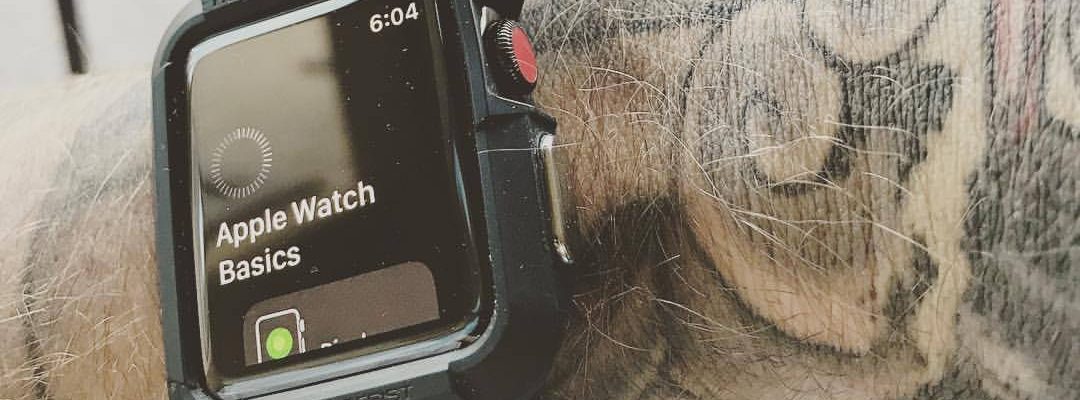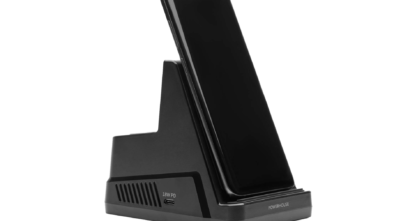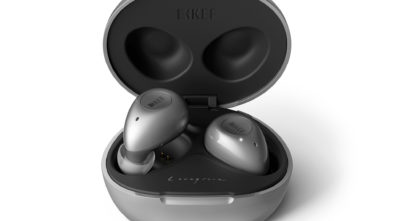Review: Apple Watch Series 3 and Apple TV 4K
Fall is my favorite time of the year. Yeah, sure, the leaves are changing, and the weather is getting cooler (which is a plus in Las Vegas), but all of that stacks up to nothing when compared to Apple’s big fall product releases. This fall is no exception, with the iPhone X, the iPhone 8, the Apple Watch Series 3 and the new Apple TV 4K. And lest we not forget the HomePod coming out later this year. Friday last week, I received both new Apple Watch Series 3 and Apple TV, and won’t get my iPhone X until November with the rest of the world.
The new Apple TV is a long-time overdue. It has the blazing fast A10X Fusion chip with 64-bit architecture. No, this isn’t as fast as the Bionic chip in this year’s iPhones, but we shouldn’t expect it to me in a $199 piece. It is light-years faster then the fourth generation ATV. It reboots almost twice as quickly, and with the additions of Bluetooth 5.0, gigabit ethernet, and even faster AC MIMO wireless, it sets up with an Apple Watch-style system over bluetooth to your iPhone or iPad. But speed isn’t the only new additions to the fifth-gen ATV, we also now have 4K Ultra High Definition output alongside HDR, with both Dolby Vision and HDR10 standards supported.
Let me say first so there is no confusion: the only way you are actually seeing real 4K HDR content on your TV using the Apple TV is via HDMI to an HDCP 2.2 port. This will not display native 4K content into an HDCP 1.4 port. This may be confusing to some consumers, or most consumers, as the Apple TV will still output a 4K signal, but 4K content will not be outputted if you aren’t using the right input. It is 1080p content unconverted to 4K. This is also true for both flavors of HDR, you must use the compatible port. Most TVs with HDR only offer HDR on one or two of the ports, and very few have 2.2 and HDR on every port. And, thus, more confusion as not every TV supports 4K and HDR, some only support 4K and SDR (normal 4K). HDR TVs come in two flavors of HDR as we stated previously, Dolby Vision and HDR10. LG is one of the few brands of sets on the market that support both Dolby Vision and HDR10. Samsung is HDR10 as is Sharp. If you are buying a new TV specifically for an ATV or other 4K content, I strongly recommend a set that offers both versions of HDR. Dolby Vision will more than likely become the standard for HDR, but better off having both at this point. Dolby Vision is the same technology that powers the impressive visuals in Dolby Cinema theaters found at high-end AMC Theaters. That brand recognition and the name Dolby will most likely push Vision over-the-top.
Two factors that will push the new Apple TV directly to the top of 4K streaming boxes: the amount of 4K movies compared to the competitors, and the price of the 4K titles. Out of the gate, Apple managed to score 4K support from almost every single studio, with the only major studio noticeably missing being Disney. Every studio has major titles, and even some classics available in 4K HDR, with almost every new release being available. Pricing for iTunes movies in 4K? The exact same price as HD. And even better, movies in HD you already owned are automatically upgraded for free to 4K HDR. Both of these factors are crushing blows to the competitors, with virtually no movie content available at all on the other boxes short of a handful of titles here and there. Like the competitors though, Apple has third party apps also available in 4K such as Netflix and, more than likely, the new, soon-to-debut Amazon Prime app. The Apple TV 4K is a must-have for videophiles and early adopters alike. A winner.
The Apple Watch has become my go-to product on a daily basis. I am avid gymaholic, and there is nothing more satisfying than seeing my activity rings close on a daily basis (which I crush almost daily, by the way). I also view 99% of my notifications on my watch, and respond to the majority directly from the watch as well. Series 2 added GPS and made this sucker water resistant to fifty meters. So how does Series 3 improve on greatness? Apple has set it free with LTE cellular data support.
You wouldn’t think LTE support makes that big of a difference, but believe me, it does. It is satisfying with the new OS 4.1 beta to hear your music on your AirPods at the gym directly from the watch, with your phone sitting at home. Making phones calls, receiving messages and notifications from mostly first party apps (as of now) without having your watch tethered to your phone is HUGE. I love being able to run into the grocery story without my phone or wallet and pay from Apple Watch using Apple Pay. I feel liberated.
But is that all Series 3 offers? Nope. Twice the speed, and it is noticeable. Dramatic difference on rebooting and opening apps. Siri now talks! I love this feature, but I would love the ability to mute Siri if I wanted. With AirPods, this bad boy is now basically a smaller version of your phone. Siri works with her voice through the AirPods, and you can now have full phone or FaceTime audio calls without your phone directly through the wireless headset. Truly impressive. The new S2 wireless chip helps make all this magic happen, and later this year, you’ll be able to charge your watch alongside your iPhone X and AirPods on Apple’s new AirPower mat. With the addition of the ability for the watch to be able to detect flights climbed, Series 3 is the most capable wearable on the market today by a mile.
Series 3 is a must-have for the athlete and business person on the move. The watch is truly becoming the one piece I feel naked without, even more so than the phone or iPad, and I will not leave home without it.



